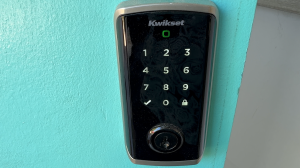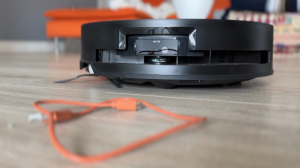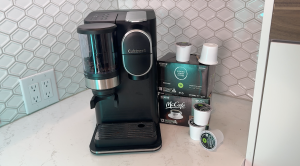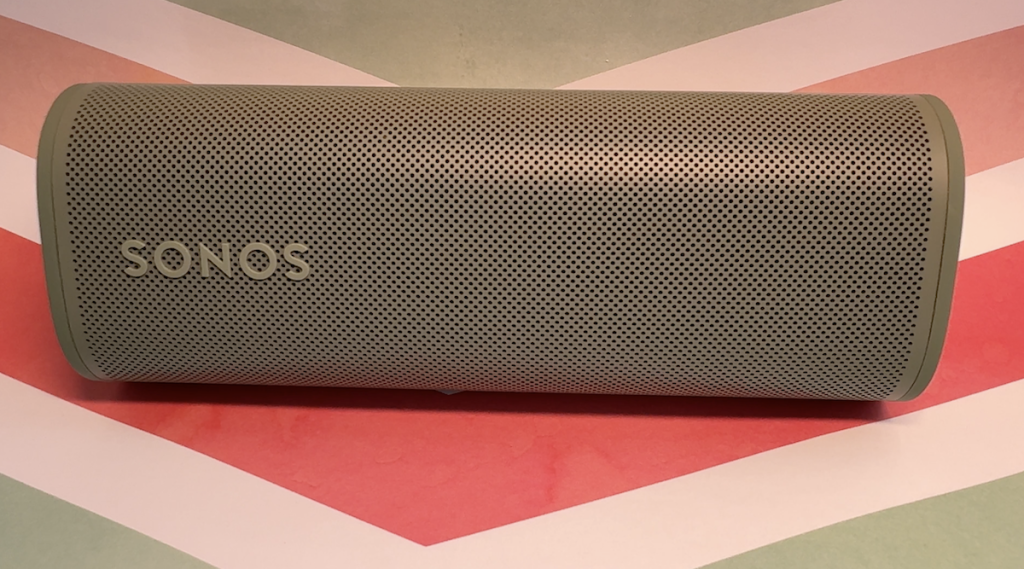
Sonos Roam 2
Summary
The Sonos Roam 2 has no other improvements over the Roam, other than the new Bluetooth button, and a minor colour change to the logo to match your chosen colour style.
Pros
- Great sound quality
- Dedicated Bluetooth button
- Super compact and portable
- Waterproof
Cons
- No significant improvements over the Roam
- Doesn’t float
- Low battery life
Sonos Roam 2: What you get
Let’s look at what you’re getting here: Sonos Roam is a small, wireless, portable speaker option that Sonos wants you to take with you in the yard, camping, RVing and on the go. It can be used either horizontally or vertically and Roam can be controlled with the Sonos app or using the subtle but easy to locate buttons on the top. It will connect using Wi-Fi (so it can join your larger Sonos system at home) or via Bluetooth (use it anywhere, even off-grid).
Read & watch my full review of original Roam here.
Sonos Roam 2: What’s new?
There are three improvements when it comes to the second generation model, and while a couple of them are welcome, for the most part the changes are underwhelming and really designed to make the speaker more appealing to new buyers who may have read reviews of the original version. Fortunately, Sonos isn’t going to charge you more for these updates; the price stays put.
- Dedicated Bluetooth button
- USB-C cable update
- Subtler logo
Let’s cover each of these off so you can see what you’re getting.
Watch my full hands-on review of Sonos Roam 2
A Sonos Roam with Button-shaped Band-Aid?
The Sonos Roam 2 is virtually identical to the original model. It has the same shape and overall design as the original Roam and comes in the same five colour variants—Black, White, Sunset, Wave, and Olive.
What’s the same?
Battery life unfortunately hasn’t improved and has the same IP67 waterproofing. It comes with Automatic Trueplay support, features integrated mics, and has Bluetooth, Wi-Fi, and AirPlay 2 support baked in.
The key change is a dedicated Bluetooth button. Here’s why this is a big deal.
I never had issues using my original Sonos Roam at home or outdoors because I set it up at home via Wi-Fi and the process is just like setting up any other Sonos speaker. Yes, Sonos made a controversial change to their app, but at the core of it all, the setup process is similar. But what if you skipped that step and decided to travel with the speaker? You’ll find out that you must connect the speaker via Wi-Fi, before you can switch to Bluetooth. That means taking an unnecessary step to switch on your phone’s Wi-Fi hotspot.
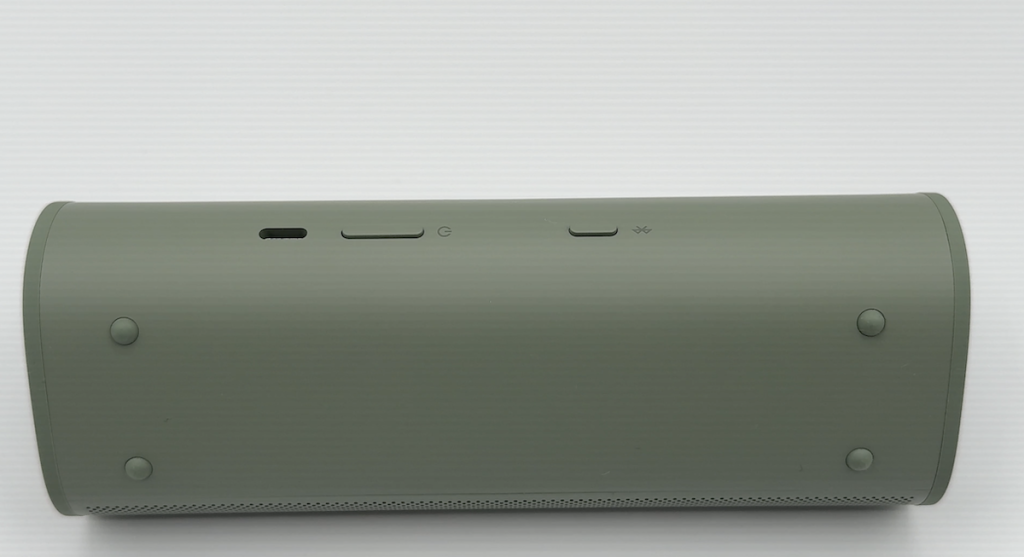
The extra physical Bluetooth button, as silly as it sounds, corrects the course and finally lets you pair the Sonos Roam 2 directly to your phone as you should with any other Bluetooth speaker. And alongside the introduction of the Sonos Ace, Sonos has finally gone mainstream in portable audio. Hooray I guess?!
New USB-C cable
By no means a significant upgrade, it’s still a welcome improvement to get a dedicated USB-C to USB-C cable. This is the way most devices are going now and I kind of feel like we might as well make the switch already. Like most electronics manufacturers you’re not getting a plug included with this so if you haven’t already invested in a high powered multi connection USB plug, now is the time to pick up a couple.
Subtle logo
Of all the things Sonos chose to refresh, printing the logo in the same colour scheme as the rest of the speaker seems like a waste of paint. I suppose having the logo blend in helps to differentiate Roam from Roam 2 at a glance, but there’s really no reason for this change that I can see.
Minor upgrades
So as you can see the biggest upgrade is the improvement in Bluetooth connectivity, which is a big deal for some folks. All that is to say that if you already own a Roam speaker, there is no need to upgrade to the second generation. But if you were holding off on making a purchase, you can rest assured that you will have a much easier time with this version.
Sound quality
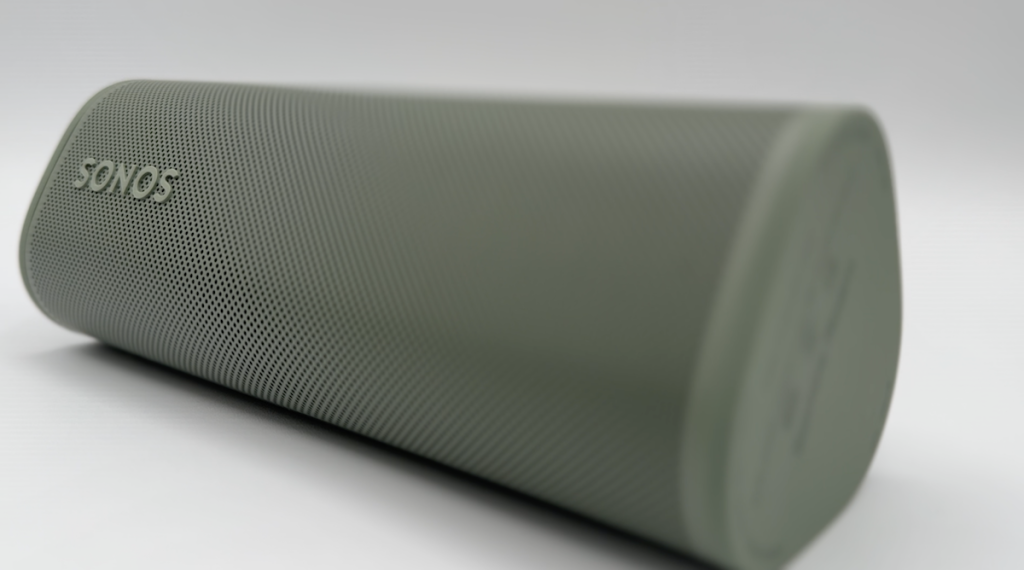
Roam is super small but definitely has power. It sounds a lot bigger than it is. Sitting next to it, 50% volume was more than enough. In a bigger open space, it is also surprisingly able to fill the space, even at that same 50% volume level.
The overall audio quality is very good… the speaker is well tuned and it’s possible to hear a lot of depth in the music. As I noted in Gen 1, there’s a lot of warmth to the sound, and the vocals sound outstanding. The music is very well balanced, which is no surprise. Sonos invests a lot in its speakers, so I’m not at all surprised that I like the sound of this one.
Outdoors you’ll not surprisingly need more volume the further you are away from it, but it seems like it’s able to dial up the right amount of power…
Sonos Roam battery life & power
Roam claims 10 hours of battery life from one charge but in my tests I got just under 10 hours, playing the music at a low level. Ten hours isn’t a lot for a portable wireless speaker, particularly when other portable models can give you 20 hours or more, so this is a pretty big downside.
When it comes to charging, you can either use the 90-degree USB-C cable that’s included with the speaker or purchase the optional wireless charging base.
Power saving feature (previously) improved
Original Sonos Roam had a big problem for me and that was that its smart power-saving feature didn’t work correctly out of the box, and the speaker would drain if not shut off completely.
Sonos fixed this with a firmware update several months after my review, and I’m glad to see that with this second generation it appears the speaker will indeed power down on its own if it hasn’t been used in about 30 minutes. If this is problematic for you, you can turn this setting off inside the Sonos app but it arrives on by default.
Sonos and Portable speakers
May 21, 2024, was a huge turning point for veteran smart speaker maker Sonos as it marked the day the company fully embraced travel-friendly products. Not only did they announce their very first pair of headphones, the Sonos Ace, but they also launched a successor to the Sonos Roam speaker. While Sonos didn’t give the Roam 2 launch much fanfare, the portable speaker is a key part of that turning point too even though the original Roam was just as portable and launched three years prior. My review of the Sonos Roam 2 will explain how a minor improvement marks a big change to the company’s vision and to understand this better, I want to share a short history lesson of the 22-year-old company.
A Short Sonos History: From “Home” to “Home and Outdoors”
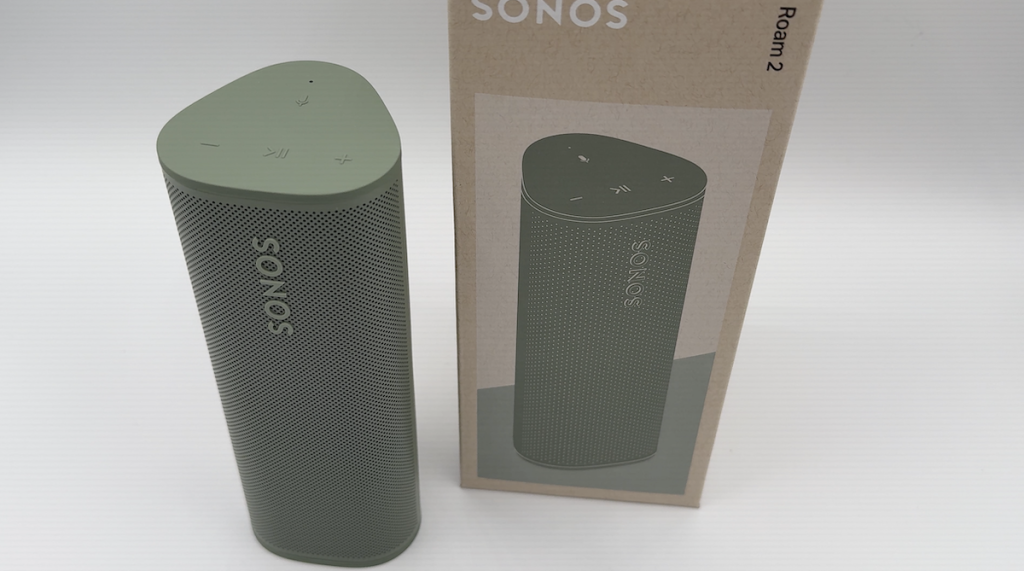
“Home” is the key word here because Sonos positions its speakers as home products and not for traveling. The company broke that tradition in 2019 when they introduced their first battery-powered speaker called the Sonos Move, followed by the Sonos Move 2 three years later. But weighing nearly 7 pounds, I wouldn’t call the Sonos Move 2 travel-friendly; it’s more designed to be moved around your home and yard.
The original Sonos Roam truly fit the portable role and I praised it for its great sound quality and portable design with added waterproofing. Moreover, the speaker kept the Sonos essence intact with its built-in Wi-Fi so it can connect to your network just like the larger speakers can. Other than the mediocre 10-hour battery life and the fact that it doesn’t float, I had no complaints. But when I used the Sonos Roam 2, I realized its predecessor had one other weakness that I failed to mention and will finally bring to light here.
About the Sonos Roam 2
I feel like the Sonos Roam 2 sends two separate messages to two different audiences and I’ll explain both. The first audience consists of the people who already own a Sonos product or two and recognize the company’s reputation as a premium manufacturer in the speaker space. They see the size of the speaker, they see the $179 price, and they expect a portable speaker that can serve as another satellite to their Sonos ecosystem. The Roam 2 fits that description because it has built-in Wi-Fi.
It also targets the crowd who are looking for a high-end, portable, Bluetooth speaker, but can’t quite afford a $300+ speaker such as the Sonos Move 2. Maybe they were curious with the Sonos brand, but didn’t bother because of the high entry-cost and view the Sonos Roam 2 more as a low-hanging fruit.
If you read my original review of the Roam, you’ll notice how my description of the Roam 2 mirrors its predecessor. That’s because the Sonos Roam 2 is essentially the same product with a big fix.
Overall Thoughts: Sonos Roam 2
Unfortunately, I have some bad news to share for folks hoping for the Sonos Roam 2 to be something much more. The Sonos Roam 2 has no other improvements other than the new Bluetooth button, and a minor colour change to the logo to match your chosen colour style.
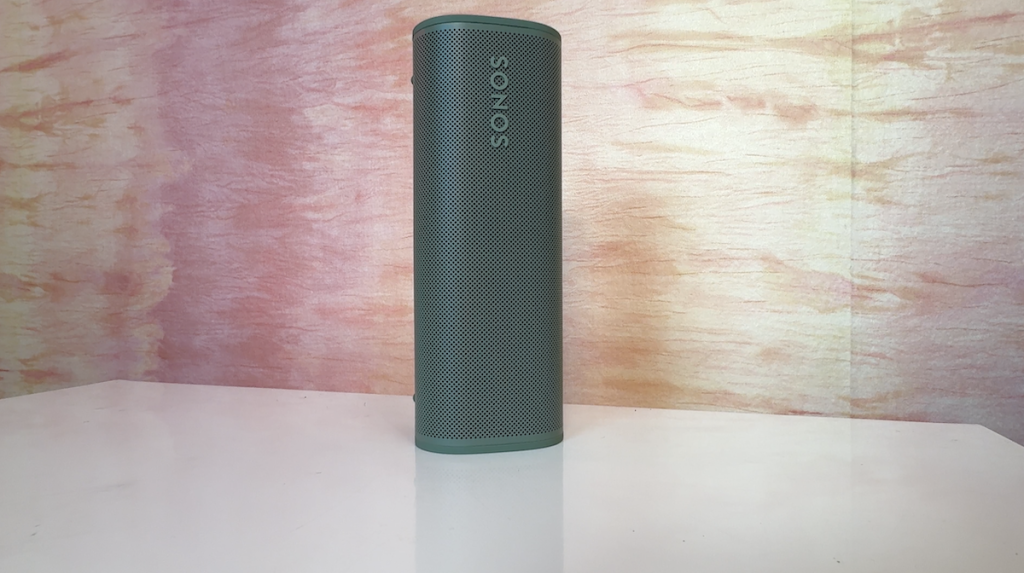
So even with that extra button, better Bluetooth connectivity remains as the primary selling point of the Sonos Roam 2.
I believe a theoretical Sonos Roam 3 will deliver the audio quality or battery gains we want if they feel threatened by a Bluetooth competitor in the $150 to $200 price range. For now, that competitor is the original Sonos Roam and I would recommend that instead if you can find it below the $179 MSRP. As for existing Sonos Roam owners, you can actually buy a Sonos Roam 2 and pair it with the original Roam in stereo which can count as a more meaningful upgrade.
Overall, it’s nice Sonos has been listening to its customers who’ve been complaining about the connectivity, and this refresh will check many of the boxes for a portable speaker.
While the sound quality is great and it’s super portable and compact –not to mention it’s really waterproof, it does have some significant plusses. But it’s not without its downsides: mainly that it still doesn’t float, and the battery life is on the lower side.
Bottom line, if you’re insisting on a Sonos speaker, Roam is your best choice for a portable option. If you’re not brand-loyal, you can probably find other great sounding speakers, with longer battery life, that float and may be more durable.
Sonos Roam sells for about $229CAD $169USD and is available from Sonos, Amazon and other retailers. You can also check out original Sonos Roam which has been heavily discounted in the wake of the new version. My full review of original Roam is available here.
**A note about Affiliate Links: TechGadgetsCanada & TechGadgetsInternational is supported by our readers. Occasionally I will include affiliate links in my reviews. I do this partly for convenience of the reader (since I’ll almost always include a link to the company website or similar anyway) in case you want to read more or purchase, but I also may get a small commission from the click, which helps me keep the blog running. If you choose to use this link I thank you greatly for supporting the blog. There’s no obligation or cost to you for using these links. As an Amazon Associate I earn from qualifying purchases.




